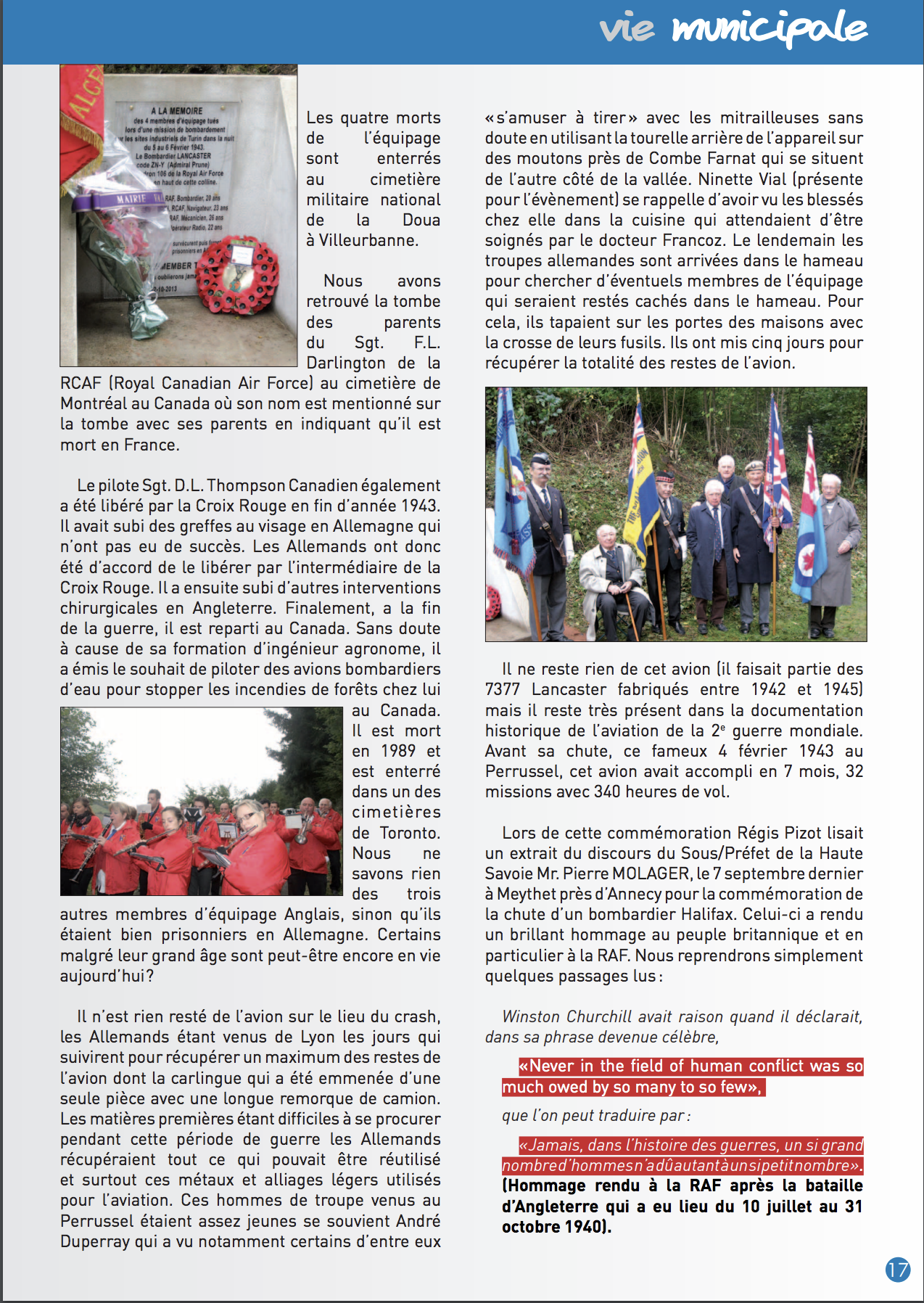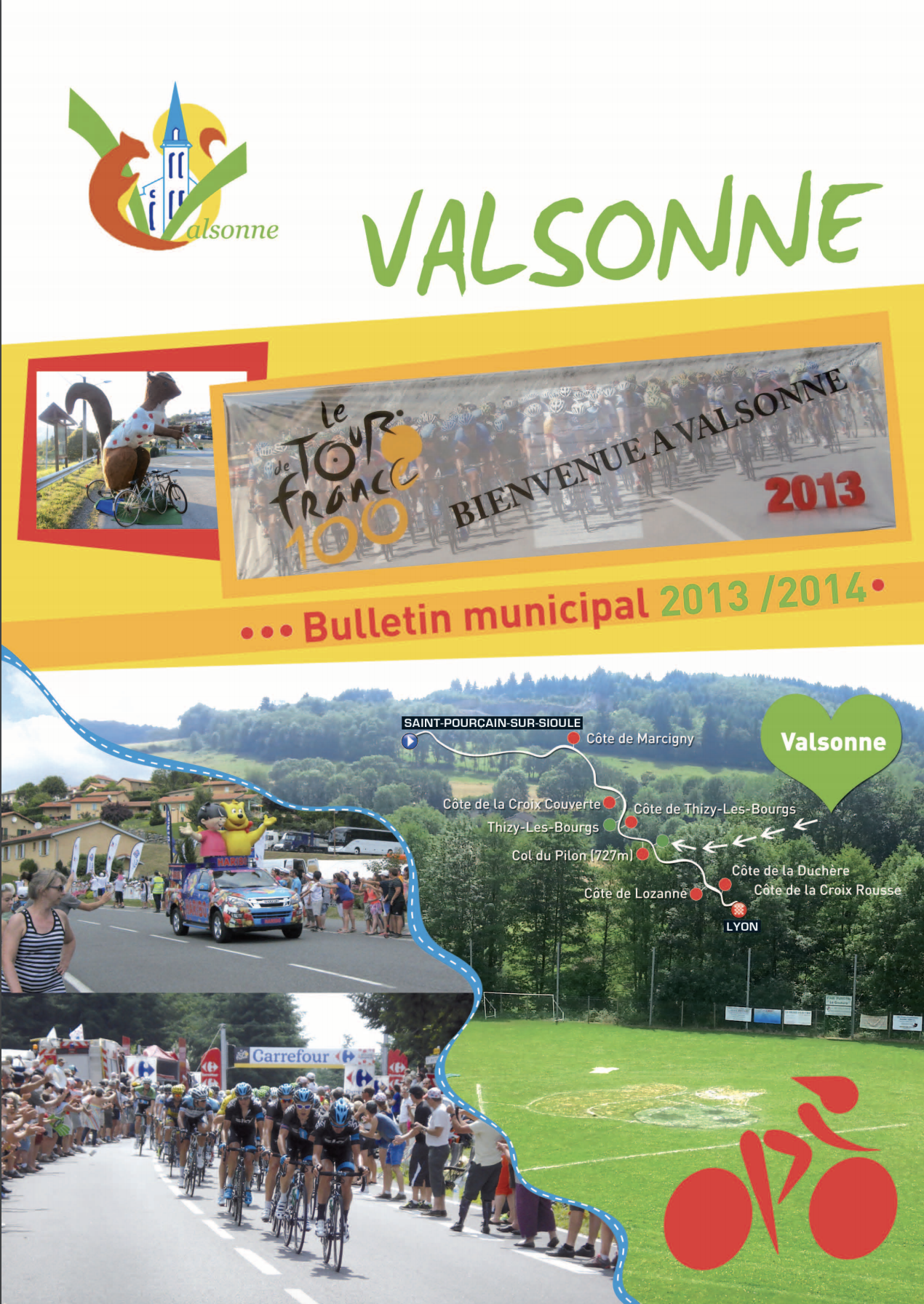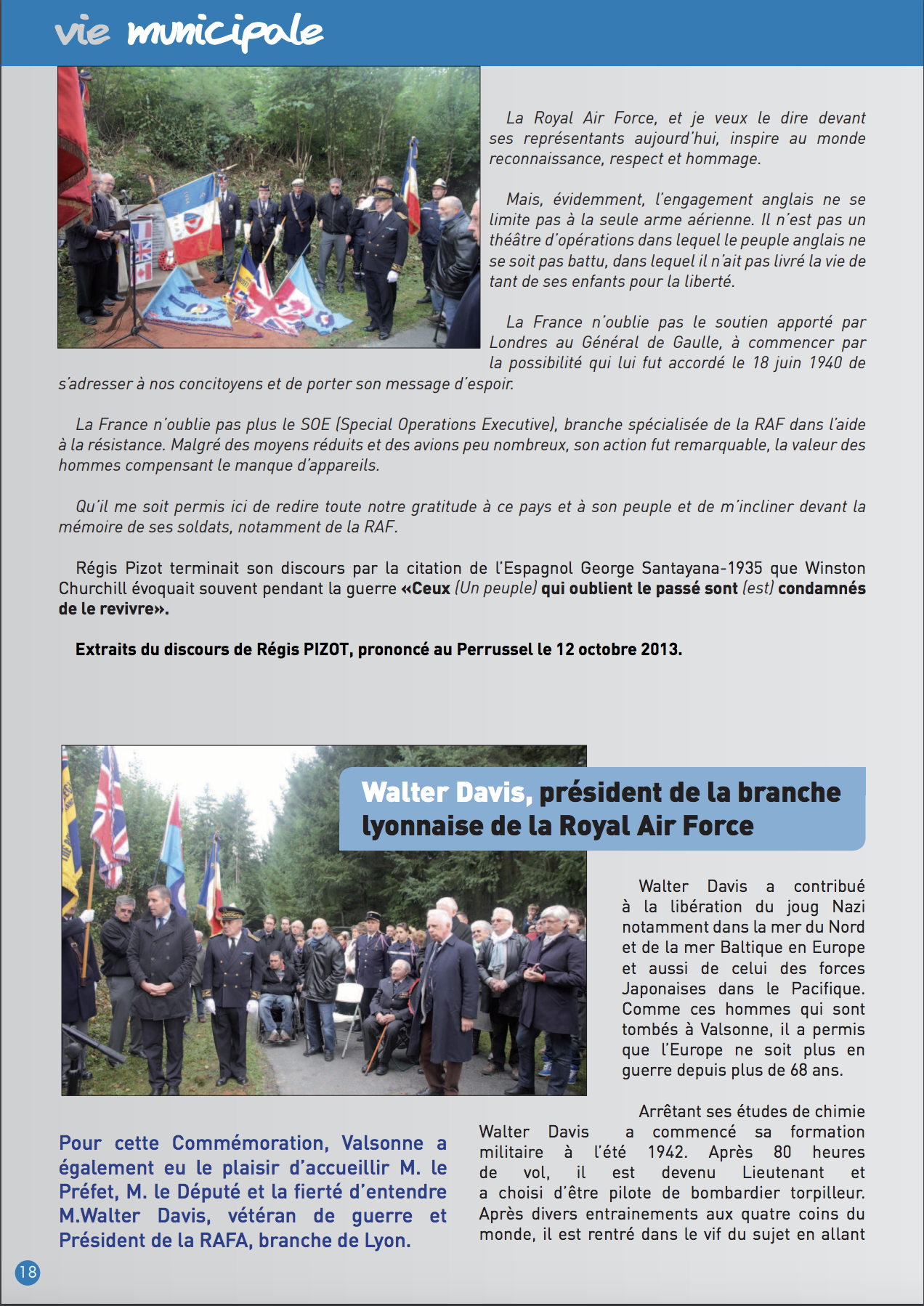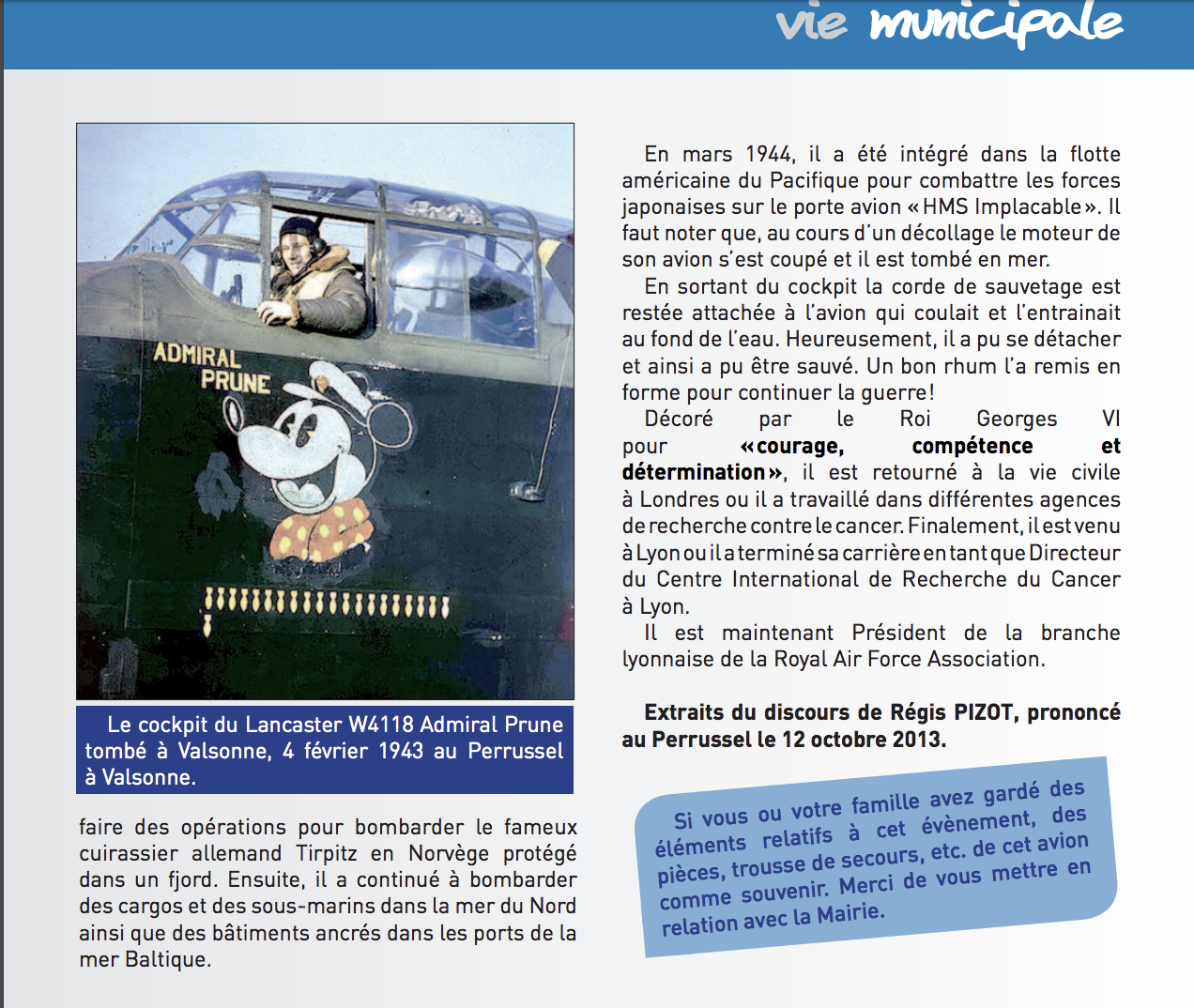Extracts of the Bulletin of the Commune of Valsonne

Lancaster WA118-ZN-Y Admiral Prune from RAF Squadron 106 departed at 6:30 pm on February 4, 1943 from the
RAF Syerston near Nottingham in England.
It was part of a squadron of 188 aircraft including 77 Lancasters for en route to bomb industrial sites in Turin. The last message received at their base at 22:30
stated “Losing altitude quickly, position near Dijon “.
It was forced having his two engines on fire to land in a ploughed field, bordered with oak trees above the Perrussel stele. Today it is all fir trees and does not resemble the landscape of 1943.
Four crewmen died, three British and one Canadian.
Sergeant Norman Johnstone RAFVR
Flying Officer George R Powell RAFVR
Sergeant Wilfred Baker RAFVR
Flight Sergeant Frank Darlington RCAF
The Canadian Sergeant D.L. Thompson RCAF and the other two crew members,
Sergeant P. Ward RAFVR and Sergeant R.P.Sutton RAF came out alive but were all seriously burned.
Sgt J Picken is the only one not to have been hurt. He survived the crash by jumping from the aircraft by parachute.
They were helped that night by Jean and Pierrot Putinier who lived in the hamlet of Chabou. Jean Putinier is, unfortunately, died a few weeks before the 70th-anniversary commemoration.
The wounded were then taken by Felix Proton who had a farm in the hamlet of Perrussel not far from the scene of the accident. They were taken on a cart pulled by a horse to his farm and treated by Dr. Francoz.
André Duperray who was present at Commemoration saw the aircraft shave the roofs of the la ferme de la Blanchisserie, with both engines on fire. He quickly with his brothers to help at the crash site. Lucienne
Nicolas who was present in 2007 for the inauguration but
who unfortunately could not be present for the 70th anniversary also arrived quickly from the village
with her father and tried to give help. She tried to take home the only uninjured survivor, rear gunner J Picken, which could have caused her serious trouble because if she had been found out helping an aviator. However, Sergeant Picken finally stayed with the rest of his crew, not wanting to leave them at the Proton farm of Perrussel.
The next day the Germans came, and the took them to the Tarare Hospital then to Lyon and finally to prison camps in Germany.
Translated by M Baker
"Losing altitude quickly, position near Dijon ".

The four dead of the crew are buried at the Doua National Military Cemetery in Villeurbanne.
The parents of Sgt. F. L. Darlington of the RCAF (Royal Canadian Air Force) are buried at the cemetery of Montreal in Canada. His name is mentioned on the headstone with his parents stating that he died in France.
The Canadian pilot Sgt. D.L. Thompson was released by the Red Cross at the end of 1943. He had undergone numerous unsuccessful operations in Germany. The Germans agreed to release him through the Red Cross. He then underwent other interventions in England and finally, returned to Canada at the end of the war.
Thompson was an agricultural engineer, and he continued to fly water planes to fight forest fires at home in Canada.
He died in 1989 and is buried in Toronto.
Little is known of the three surviving English crew members, other than they were POWs in Germany. Some despite their age may still be alive today?
Nothing was left of the plane at the crash site; the Germans came from Lyon in the days that followed to recover as much of the remains of the plane as possible. The cabin was taken away as a single piece on a long truck trailer.
Raw materials were difficult to obtain during this war period and so the Germans recovered everything that could be reused and especially those light metals and alloys used in aviation.
The soldiers that came to Perrussel were quite young, remembers André Duperray who saw some of them
“Have fun shooting” with machine guns without
doubt using the rear turret of the device on sheep near Combe Farnat which are located on the other side of the valley.
Ninette Vial who was also present, remembers seeing the wounded from her kitchen when they were waiting to be
treated by Dr. Francoz. The next day German troops arrived in the hamlet to search for possible crew members who could have remained hidden. They were banging on the doors of houses with the butt of their rifles.
They took five days to recover all the remains of the plane.
Nothing now physically remains of this plane (it was one of the 7377 Lancasters manufactured between 1942 and 1945) but the Lancaster remains very present in the history of aviation of the Second World War.
Before the crash on February 4, 1943, in Perrussel, this plane had completed in 7 months, 32 missions with 340 flying hours.
At the commemoration, Regis Pizot read an extract from the speech of the Sous / Prefect of the Haute Savoie Mr. Pierre MOLAGER, on 7th September 2012 at Meythet near Annecy for the commemoration of the crash of a Halifax bomber. He recounted a brilliant tribute to the British people and in particular to the RAF.
“In his tribute to the RAF after the Battle of Britain in 1940, Winston Churchill was right when he declared, in his famous speech, “Never in the field of human conflict was so much owed by so many to so few.”
Translated by M Baker



